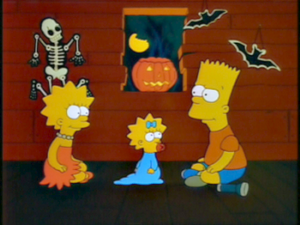The Generation Lap
Originally posted on Weekends in Paradelle
In my last post, I wrote about the generation gap - something that I associate with the 1960s. Today, I want to write about what I and some others are calling a "generation lap" that I think exists today.
It's something that has been in my thoughts off and on for a few years, but it didn't come together until I saw a news piece on TV about the 40th anniversary of the Kent State shootings, followed by reading a like-minded piece in Time magazine.
In that Time article, Nancy Gibbs says that:
And now? Today's kids aren't taking up arms against their parents; they're too busy texting them. The members of the millennial generation, ages 18 to 29, are so close to their parents that college students typically check in about 10 times a week, and they are all Facebook friends. Kids and parents dress alike, listen to the same music and fight less than previous generations, and Millennials assert that older people's moral values are generally superior to their own.But Gibbs also notes that young people still seem to perceive a generation gap. She points to a reports from the Pew Research Center report, 79% of Millennials say there is a major difference in the point of view of younger and older people today. I write about that report on another blog and I don't dispute their findings. And yet, I still feel the gap is much narrower than 40 years ago.
I would not dispute that young Americans today are now more educated, more diverse, and more optimistic than previous generations. But that is exactly what was said about my generation in the 1960s.
Technology has something to do with the overlap. Though I can't say that my fellow baby boomers can match the 83% of young people who report that they sleep with their cell phones (and I see my millennial sons do it), we do have the same smartphones, do texting and add apps in much the same way. In 1969, parents were not rushing to put tape decks in their cars and were not listening to the same music as their children.
I also accept the idea of social historian Neil Howe who suggests that technology largely shapes a generation; a generation does not shape technology. I could come up with some arguments against it, but I think the Internet shaped (and is shaping) the Millennial Generation more than they are changing the Internet. That may change as they continue to enter the workforce and have the power to change it.
Were the Millennials "raised in a cocoon" as Gibbs suggests. Yes, I saw my fellow new parents fearful of letting our kids go to the park alone, walk to friends' house to play unsupervised, get dropped off at the mall or walk home from school alone. Their games and sports were largely structured and supervised by adults. Do kids actually go to parks and organize their own pickup games anymore?
But online they are known for their willingness to share personal information, share and build community. They tweet and text and have hundreds or thousands of "friends" and people they "follow."
Then again, I do the same thing. I started an online site for my high school class, but Facebook has quickly outdistanced it for participation. My fellow classmates post daily, comment incessantly, post pictures of their kids, spouses, vacations and pets with people they wouldn't have sat with at a lunch table.
Gibbs concludes by saying:
"Youth is easily deceived," Aristotle said, "because it is quick to hope." But I'd rather think that the millennials know something we don't about the inventions that will emerge from their networked brains, the solutions that might arise from a generation so determined to bridge gaps and work as a team. In that event, their vision would be vindicated, not only for themselves but for those of us who will one day follow their lead.I go further and propose that the generation gap is so much smaller today that there's more of a generation lap - as in overlap - than a gap.
It far more likely today that a teenager and their parents might have the same tech devices (iPods, cell phones) and might use the same online services (like Facebook) and might listen to some of the same music and go see the same movies than it was 40 years ago. There's overlap.That's a good thing, right? The gap was bad. It separated us. So, an overlap would be good.
Well, I'm not sure how young people feel about the older generation playing in their generation. I wrote last year about the "creepy treehouse effect" that comes from adults (including teachers) coming into the space ("the treehouse") that young people consider to be their own.
I first entered Facebook so that I could write and present about it to other educators. I had to request friends from amongst my former students so that I could show how it worked because, at that time, none of my colleagues used it. My sons agreed to "friend me" with the understanding that I would never post to their wall. (That rule has relaxed a bit since they graduated college, but I'm still cautious about their treehouse.)
Michael Staton has suggested that the creepy treehouse is the wrong metaphor and that a "functional mall" might better describe the effect, at least for educators. Perhaps. But both point to the shared space the generations now inhabit.
Historical Note: I am using the term "generation lap" here (like Gibbs) in a different way from its original usage. Don Tapscott used the term in the October 14, 1996 issue of Advertising Age when writing that "We're shifting from generation gap to generation lap as kids flash by their parents on the track, lapping them in many areas of daily life. This generation of Net-savvy kids, quite frankly, doesn't trust its parents' ability to drive fast enough in the wired world." I don't think parents are being beaten so badly in the race (in technology & other areas) as they were in 1996. We are closing in.
 Whether or not you feel that social networking and Web 2.0 applications like Facebook and Twitter have any educational legitimacy or not, teachers are experimenting with using them in their courses.
Whether or not you feel that social networking and Web 2.0 applications like Facebook and Twitter have any educational legitimacy or not, teachers are experimenting with using them in their courses.